Repeated intravenous administration of hiPSC-MSCs enhance the efficacy of cell-based therapy in tissue regeneration
- PMID: 36008710
- PMCID: PMC9411616
- DOI: 10.1038/s42003-022-03833-8
Repeated intravenous administration of hiPSC-MSCs enhance the efficacy of cell-based therapy in tissue regeneration
Abstract
We seek to demonstrate whether therapeutic efficacy can be improved by combination of repeated intravenous administration and local transplantation of human induced pluripotential stem cell derived MSCs (hiPSC-MSCs). In this study, mice model of hind-limb ischemia is established by ligation of left femoral artery. hiPSC-MSCs (5 × 105) is intravenously administrated immediately after induction of hind limb ischemia with or without following intravenous administration of hiPSC-MSCs every week or every 3 days. Intramuscular transplantation of hiPSC-MSCs (3 × 106) is performed one week after induction of hind-limb ischemia. We compare the therapeutic efficacy and cell survival of intramuscular transplantation of hiPSC-MSCs with or without a single or repeated intravenous administration of hiPSC-MSCs. Repeated intravenous administration of hiPSC-MSCs can increase splenic regulatory T cells (Tregs) activation, decrease splenic natural killer (NK) cells expression, promote the polarization of M2 macrophages in the ischemic area and improved blood perfusion in the ischemic limbs. The improved therapeutic efficacy of MSC-based therapy is due to both increased engraftment of intramuscular transplanted hiPSC-MSCs and intravenous infused hiPSC-MSCs. In conclusion, our study support a combination of repeated systemic infusion and local transplantation of hiPSC-MSCs for cardiovascular disease.
© 2022. The Author(s).
Conflict of interest statement
The authors declare no competing interests.
Figures
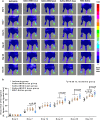

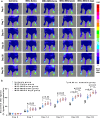
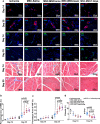
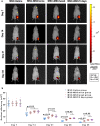

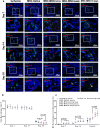

Similar articles
-
Immunomodulation by systemic administration of human-induced pluripotent stem cell-derived mesenchymal stromal cells to enhance the therapeutic efficacy of cell-based therapy for treatment of myocardial infarction.Theranostics. 2021 Jan 1;11(4):1641-1654. doi: 10.7150/thno.46119. eCollection 2021. Theranostics. 2021. PMID: 33408772 Free PMC article.
-
Exosomes from Human-Induced Pluripotent Stem Cell-Derived Mesenchymal Stromal Cells (hiPSC-MSCs) Protect Liver against Hepatic Ischemia/ Reperfusion Injury via Activating Sphingosine Kinase and Sphingosine-1-Phosphate Signaling Pathway.Cell Physiol Biochem. 2017;43(2):611-625. doi: 10.1159/000480533. Epub 2017 Sep 21. Cell Physiol Biochem. 2017. PMID: 28934733
-
Human iPSC-derived mesenchymal stem cells relieve high blood pressure in spontaneously hypertensive rats via splenic nerve activated choline acetyltransferase-positive cells.Sci China Life Sci. 2025 Feb;68(2):502-514. doi: 10.1007/s11427-023-2675-2. Epub 2024 Oct 12. Sci China Life Sci. 2025. PMID: 39428428
-
Hepatoprotective effect of exosomes from human-induced pluripotent stem cell-derived mesenchymal stromal cells against hepatic ischemia-reperfusion injury in rats.Cytotherapy. 2016 Dec;18(12):1548-1559. doi: 10.1016/j.jcyt.2016.08.002. Epub 2016 Aug 31. Cytotherapy. 2016. PMID: 27592404
-
Insensitivity of Human iPS Cells-Derived Mesenchymal Stem Cells to Interferon-γ-induced HLA Expression Potentiates Repair Efficiency of Hind Limb Ischemia in Immune Humanized NOD Scid Gamma Mice.Stem Cells. 2015 Dec;33(12):3452-67. doi: 10.1002/stem.2094. Epub 2015 Aug 6. Stem Cells. 2015. PMID: 26175298
Cited by
-
The Role of Stem Cells as Therapeutics for Ischaemic Stroke.Cells. 2024 Jan 6;13(2):112. doi: 10.3390/cells13020112. Cells. 2024. PMID: 38247804 Free PMC article. Review.
-
Effects of mesenchymal stem cell on dopaminergic neurons, motor and memory functions in animal models of Parkinson's disease: a systematic review and meta-analysis.Neural Regen Res. 2024 Jul 1;19(7):1584-1592. doi: 10.4103/1673-5374.387976. Epub 2023 Nov 8. Neural Regen Res. 2024. PMID: 38051903 Free PMC article.
-
Cutting-edge regenerative therapy for Hirschsprung disease and its allied disorders.Surg Today. 2024 Sep;54(9):977-994. doi: 10.1007/s00595-023-02741-6. Epub 2023 Sep 5. Surg Today. 2024. PMID: 37668735 Review.
-
Engineered Tissue for Cardiac Regeneration: Current Status and Future Perspectives.Bioengineering (Basel). 2022 Oct 22;9(11):605. doi: 10.3390/bioengineering9110605. Bioengineering (Basel). 2022. PMID: 36354516 Free PMC article. Review.
-
Mesenchymal stem cell therapy for neurological disorders: The light or the dark side of the force?Front Bioeng Biotechnol. 2023 Feb 28;11:1139359. doi: 10.3389/fbioe.2023.1139359. eCollection 2023. Front Bioeng Biotechnol. 2023. PMID: 36926687 Free PMC article. Review.
References
-
- Madonna R, et al. Position Paper of the European Society of Cardiology Working Group Cellular Biology of the Heart: Cell-based therapies for myocardial repair and regeneration in ischemic heart disease and heart failure. Eur. Heart J. 2016;37:1789–1798. doi: 10.1093/eurheartj/ehw113. - DOI - PMC - PubMed
Publication types
MeSH terms
LinkOut - more resources
Full Text Sources

